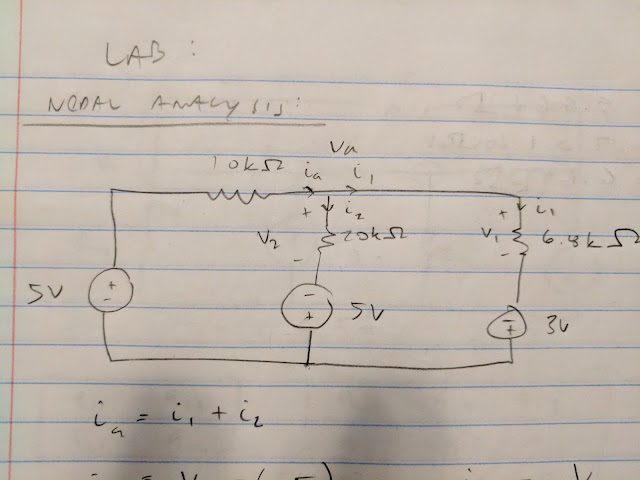Lab 5: Mesh Analysis

Lab 5: Mesh Analysis Joel Cook March 13, 2018 Purpose: The purpose of this lab is to analyze different circuits using mesh analysis to solve for unknown quantities before building and measuring the quantities to compare against predicted values. Mesh Analysis I: We analyzed the circuit in the diagram and predicted that the voltage drop across the 6.8k ohm resistor would be 4.2V and across the 20k ohm resistor would be 2.38V. I performed the mesh analysis by inspection, which means finding the current in each loop by summing the resistors in the loop, subtracting the resistors shared with other loops and accounting for the power supplies. The matrices generated can be solved by hand using reduced row echelon form or using a calculator's matrix functions. The measured voltages were 2.36V and 4.36V, respectively. The predicted voltage was within 4% of the measured voltage. Mesh Analysis II: For the second circuit diagram, we used mesh analysis an...



